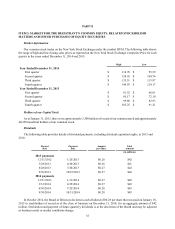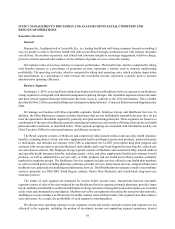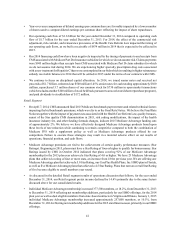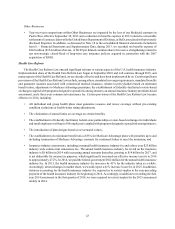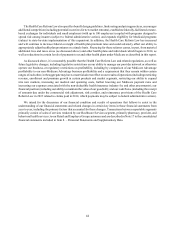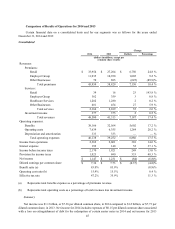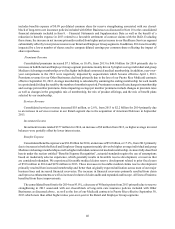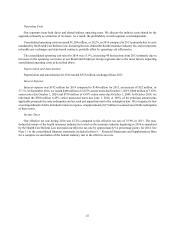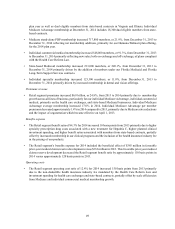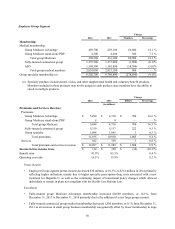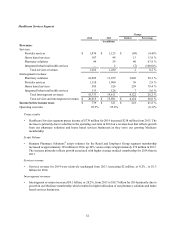Humana 2014 Annual Report Download - page 52
Download and view the complete annual report
Please find page 52 of the 2014 Humana annual report below. You can navigate through the pages in the report by either clicking on the pages listed below, or by using the keyword search tool below to find specific information within the annual report.44
The Health Care Reform Law also specifies benefit design guidelines, limits rating and pricing practices, encourages
additional competition (including potential incentives for new market entrants), establishes federally-facilitated or state-
based exchanges for individuals and small employers (with up to 100 employees) coupled with programs designed to
spread risk among insurers (subject to federal administrative action), and expands eligibility for Medicaid programs
(subject to state-by-state implementation of this expansion). In addition, the Health Care Reform Law has increased
and will continue to increase federal oversight of health plan premium rates and could adversely affect our ability to
appropriately adjust health plan premiums on a timely basis. Financing for these reforms comes, in part, from material
additional fees and taxes on us (as discussed above) and other health plans and individuals which began in 2014, as
well as reductions in certain levels of payments to us and other health plans under Medicare as described in this report.
As discussed above, it is reasonably possible that the Health Care Reform Law and related regulations, as well as
future legislative changes, including legislative restrictions on our ability to manage our provider network or otherwise
operate our business, or regulatory restrictions on profitability, including by comparison of our Medicare Advantage
profitability to our non-Medicare Advantage business profitability and a requirement that they remain within certain
ranges of each other, in the aggregate may have a material adverse effect on our results of operations (including restricting
revenue, enrollment and premium growth in certain products and market segments, restricting our ability to expand
into new markets, increasing our medical and operating costs, further lowering our Medicare payment rates and
increasing our expenses associated with the non-deductible health insurance industry fee and other assessments); our
financial position (including our ability to maintain the value of our goodwill); and our cash flows (including the receipt
of amounts due under the commercial risk adjustment, risk corridor, and reinsurance provisions of the Health Care
Reform Law in 2015 related to claims paid in 2014, which payments may be subject to federal administrative action).
We intend for the discussion of our financial condition and results of operations that follows to assist in the
understanding of our financial statements and related changes in certain key items in those financial statements from
year to year, including the primary factors that accounted for those changes. Transactions between reportable segments
primarily consist of sales of services rendered by our Healthcare Services segment, primarily pharmacy, provider, and
behavioral health services, to our Retail and Employer Group customers and are described in Note 17 to the consolidated
financial statements included in Item 8. – Financial Statements and Supplementary Data.



